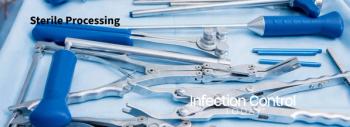
Investigators Report on HH Instruction in Medical Students' Early Education
Ignaz Semmelweis discovered the importance of hand hygiene in 1858, and 150 years later, it was the Semmelweis University (SU) in Budapest that first adapted a digital tool to effectively teach proper hand disinfection technique. The Department of Surgical Research and Techniques at SU began to employ a UV dye-based, computer-imaging empowered device after it received the first ICPIC Innovation Academy Award. Lehotsky, et al. (2013) report on introducing an objective hand hygiene control in the early stage of medical education.
The training of third-year medical students at SU starts with the theoretical and practical education of hand disinfection; their performance is assessed early in and at the end of the semester. In the end, all students must proof a perfect hand rubbing to qualify for exams. First in 2011, 377 students were tested and next year, 281 students took part. The hand rubbings were imaged, recorded, and subsequently analyzed to identify error patterns in coverage. Moreover, comparable results from a week-long trial in 2011 from the National University Hospital Singapore (NUH) were also acquired, involving 95 students.
Sixty-seven percent of students completed the rubbing perfectly at first in 2011, while 64.5 percent passed in the following year. Most errors occurred on the back of the hand, at the tips and the thumb, these responsible for 55percent and 52percent of errors in 2011 and 2012, respectively. Singapore students presented a 60Â percent pass rate. Failed students were redirected for education, to acquire a better hand hygiene practice.
The researchers conclude that through objective testing, a clear quality feedback was provided to students which helped them to correct their errors and should lead to improved practice regarding safe patient care. Participants reported highly positively about the use of the digital assessment system. Furthermore, the device has been employed at a major public outreach event with great success, attracting several hundred visitors at the hand hygiene booth.
References:
A Lehotsky, M Nagy, P Rona, L Szilagyi, G Weber and T Haidegger. Oral presentation O043 at the 2nd International Conference on Prevention and Infection Control (ICPIC 2013): Early adaptors of a hand hygiene control system. Antimicrobial Resistance and Infection Control 2013, 2(Suppl 1):O43 doi:10.1186/2047-2994-2-S1-O43
Haidegger T, Nagy M, Lehotsky A, Szilagyi L. An Innovative Device for Objective Hand Disinfection Control. In Proc. of the 1st Intl. Conf. on Prevention and Infection Control (ICPIC). Volume 5. Geneva; 2011:25-26.
Â
Newsletter
Stay prepared and protected with Infection Control Today's newsletter, delivering essential updates, best practices, and expert insights for infection preventionists.






